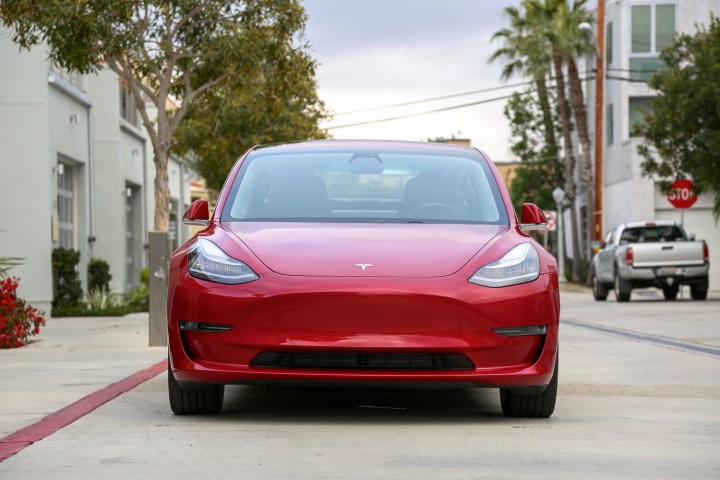
Tesla has a need for silicon speed when it comes to the company’s ambitious plans for autonomous driving. After confirming late last year that it was working on its own artificial intelligence chips, CEO Elon Musk revealed more details on an earnings call with investors, stating that the chip is “the world’s most advanced computer specifically for autonomous operation.” Called Hardware 3, Tesla’s new in-car computer is said to be more powerful than the Nvidia hardware that it replaces.
“Musk said that the new chip, due out next year, will deliver an ‘order of magnitude improvement in operations per second’ compared to ‘current Nvidia hardware,'” Ars Technica reported. Tesla currently uses Nvidia’s Drive PX2 platform in its cars, but that chip debuted nearly two years ago. Since then, Nvidia has announced a new PX 2 Pegasus chip, which the company claims delivers 10 times the performance of the original chips that Tesla adopted.
During his call, Musk did not clarify whether Tesla was benchmarking its custom silicon against the older PX 2 chipset or Nvidia’s newer PX 2 Pegasus. If Tesla’s claims are against Nvidia’s newer chip, then investing in its own chip design could give Tesla an edge over competitors relying on off-the-shelf components from suppliers like Nvidia. According to Musk, Tesla’s custom processor costs about as much as Nvidia’s chips.
“We had the benefit of having the insight into seeing what Tesla’s neural networks looked like back then and having projections of what they would look like in the future, and we were able to leverage all of that knowledge and our willingness to totally commit to that style of computing to produce a design that is dramatically more efficient and has dramatically more performance than what we have today,” Tesla’s chip architect Steve Bannon said of his company’s efforts. Bannon, a former employee of Apple, was also responsible for developing the iPhone’s custom A5 processor.
Musk said that Tesla’s strategy is to run the neural network “at a bare metal level” and to do the calculations in the circuit and not in emulation mode, TechCrunch reported. Tesla is able to overcome some of the constraints experienced by competing systems when data is transferred between the CPU and GPU by locating the memory required to store the computations next to the circuits doing the matrix calculations. The result of Tesla’s chip engineering is that the chip is able to handle 2,000 frames per second with full redundancy and failover compared to just 200 frames per second with Nvidia’s hardware.
Because of a backward-compatible design, owners of current Tesla models will be able to upgrade to the new chips and benefit from the same performance gains. Musk said that the connectors are the same, and users will be able to swap in the new computer into their Model S, X, and 3 vehicles. Details of Tesla’s upgrade plans were not made available.
Editors' Recommendations
- Here’s how Ford will give EV customers Tesla Supercharger access
- Qualcomm says its new chips are 4.5 times faster at AI than rivals
- NASA’s Mars rover uses its self-driving smarts to navigate toughest route
- Is Tesla Full Self-Driving worth it?
- Apple’s rumored car could cost the same as a Tesla Model S


